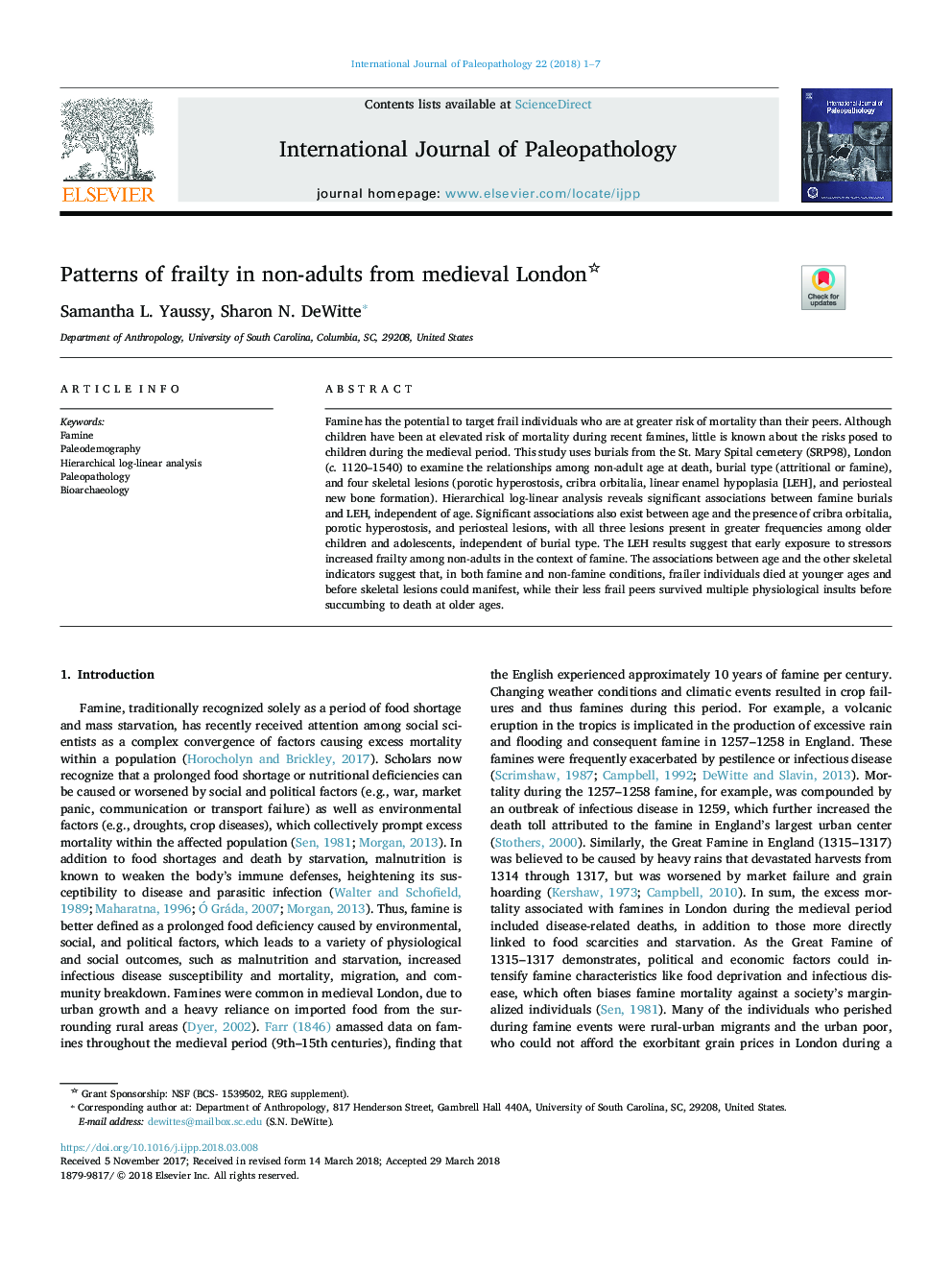| کد مقاله | کد نشریه | سال انتشار | مقاله انگلیسی | نسخه تمام متن |
|---|---|---|---|---|
| 6554735 | 1422369 | 2018 | 7 صفحه PDF | دانلود رایگان |
عنوان انگلیسی مقاله ISI
Patterns of frailty in non-adults from medieval London
ترجمه فارسی عنوان
الگوهای ضعف در افراد غیر بزرگسال از لندن قرون وسطی
دانلود مقاله + سفارش ترجمه
دانلود مقاله ISI انگلیسی
رایگان برای ایرانیان
کلمات کلیدی
قحطی پالئودموگرافی، تجزیه و تحلیل خطی سلسله مراتبی، پالئوپاتولوژی، زیستشناسی،
موضوعات مرتبط
علوم زیستی و بیوفناوری
بیوشیمی، ژنتیک و زیست شناسی مولکولی
فیزیولوژی
چکیده انگلیسی
Famine has the potential to target frail individuals who are at greater risk of mortality than their peers. Although children have been at elevated risk of mortality during recent famines, little is known about the risks posed to children during the medieval period. This study uses burials from the St. Mary Spital cemetery (SRP98), London (c. 1120-1540) to examine the relationships among non-adult age at death, burial type (attritional or famine), and four skeletal lesions (porotic hyperostosis, cribra orbitalia, linear enamel hypoplasia [LEH], and periosteal new bone formation). Hierarchical log-linear analysis reveals signiï¬cant associations between famine burials and LEH, independent of age. Significant associations also exist between age and the presence of cribra orbitalia, porotic hyperostosis, and periosteal lesions, with all three lesions present in greater frequencies among older children and adolescents, independent of burial type. The LEH results suggest that early exposure to stressors increased frailty among non-adults in the context of famine. The associations between age and the other skeletal indicators suggest that, in both famine and non-famine conditions, frailer individuals died at younger ages and before skeletal lesions could manifest, while their less frail peers survived multiple physiological insults before succumbing to death at older ages.
ناشر
Database: Elsevier - ScienceDirect (ساینس دایرکت)
Journal: International Journal of Paleopathology - Volume 22, September 2018, Pages 1-7
Journal: International Journal of Paleopathology - Volume 22, September 2018, Pages 1-7
نویسندگان
Samantha L. Yaussy, Sharon N. DeWitte,
